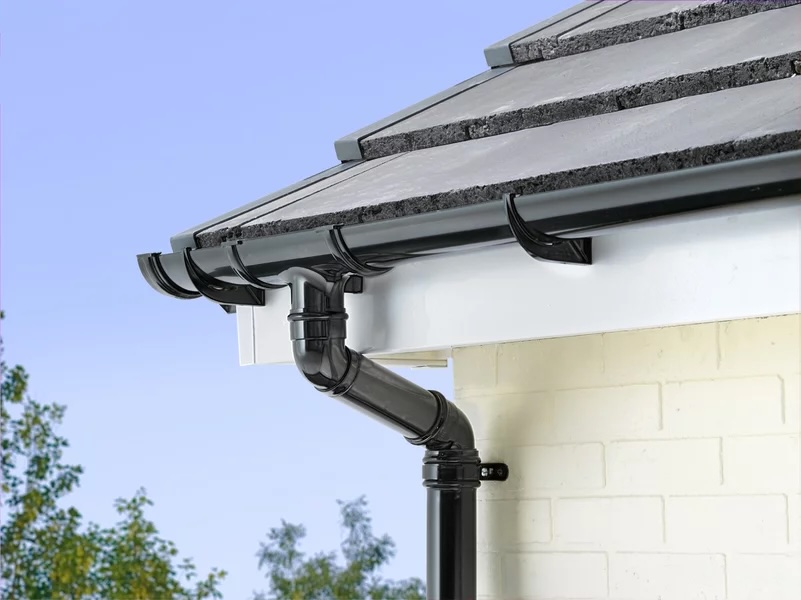
Gutter Repair
Add a review FollowOverview
-
Founded Date March 31, 1929
-
Sectors Software Development
-
Posted Jobs 0
-
Viewed 57
Company Description
Three Common Reasons Your Quality Guttering Isn’t Performing (And The Best Ways To Fix It)
Quality Guttering: The Essential Guide to Proper Drainage Systems
Guttering plays a critical function in the health and maintenance of a building. Its primary function is to gather and divert rainwater away from roofing systems and foundations, thus preventing damage and guaranteeing durability. Quality guttering is important for protecting homes and commercial structures alike from a myriad of possible problems, varying from water seepage to structural damage. This short article checks out the significance of quality guttering, the different types available, the materials utilized, and maintenance tips, offering a thorough guide for home owners.

Significance of Quality Guttering
Quality guttering is not just an aesthetic addition to a building; it serves numerous vital functions:
-
Water Diversion: Properly set up guttering systems channel rainwater far from structures, protecting structures from water-related issues like settling and cracks.
-
Preventing Erosion: Quality guttering can avoid soil disintegration around the home, maintaining landscaping and preventing costly repairs.
-
Mold and Mildew Prevention: By directing water far from walls and roofs, guttering reduces the risk of mold and mildew, promoting a healthier living environment.
-
Protecting Exterior: Adequate gutter systems keep exteriors totally free from water stains and damage, which can deteriorate materials like wood and brick over time.
-
Enhancing Property Value: A properly maintained gutter system boosts curb appeal and increases general home value.
Kinds of Guttering
Guttering is available in various types, each fit for particular needs and visual preferences. Below is a list of some common types of guttering systems:
1. K-Style Gutters
- Most common type used in residential homes.
- Provides a flat bottom and a decorative front.
- Available in various widths and depths.
2. Half-Round Gutters
- Semi-circular shape.
- Supplies a traditional look suitable for historic homes.
- Can handle large volumes of water but might need more frequent cleaning.
3. Box Gutters
- Generally concealed within the roof structure.
- Serves big commercial buildings or flat-roofed homes.
- Perfect for big water volumes but needs professional installation.
4. Gutter Guards
- Additional protection to keep out particles.
- Minimizes maintenance needs considerably.
- Offered in numerous materials and styles.
5. Seamless Gutters
- Custom-made on-site to fit the structure.
- Lowers the possibilities of leaks due to less joints.
- More costly but often worth the financial investment.
Guttering Materials
When choosing quality guttering, the material is important. Each material has its benefits and drawbacks, which impact sturdiness, cost, and appearance.
| Material | Pros | Cons |
|---|---|---|
| Aluminum | Lightweight, rust-resistant, affordable. | Can damage quickly, reveals scratches. |
| Copper | Very durable, visually appealing. | Extremely expensive, oxidizes in time. |
| Vinyl | Lightweight, easy to install, affordable. | Not as durable, can break in cold. |
| Steel | Really strong, resilient. | Prone to rust, heavy. |
| Zinc | Long-lasting, corrosion-resistant. | Costly, needs professional installation. |
Maintenance Tips for Quality Guttering
Appropriate maintenance of gutter systems is important to ensure they work successfully and last longer. Here are some best practices to follow:
-
Regular Cleaning: Clear leaves, particles, and dirt from gutters a minimum of twice a year, or more often throughout heavy fall seasons.
-
Inspect for Damage: Inspect gutters and downspouts for indications of rust, fractures, or damage; carry out repairs immediately.
-
Make Sure Proper Sloping: Gutters should have a minor slope toward downspouts to enable reliable water circulation. Inspect the slope throughout examinations.
-
Monitor Water Flow: After heavy rains, guarantee gutters and downspouts are directing water far from the foundation. Keep an eye out for pooling or areas that might show a blockage.
-
Buy Gutter Guards: Gutter guards can prevent debris from going into, therefore decreasing the frequency of cleaning.
Frequently Asked Questions About Quality Guttering
Q1: How frequently should I clean my gutters?
A: It is advisable to tidy gutters at least twice a year, preferably in spring and fall. However, if trees neighbor, more frequent cleaning may be necessary.
Q2: What are the signs that my gutters require repair?
A: Signs consist of sagging gutters, water stains on the outside walls, noticeable rust, mold around the structure, and pooling water near the residential or commercial property.
Q3: Can I set up gutters myself?
A: While DIY installation is possible, working with a professional is normally advised for a seamless fit, specifically for complex systems or materials.
Q4: What are gutter guards, and do I require them?
A: Gutter guards are protective screens placed over the gutters to prevent debris build-up. They can conserve time on cleaning and are beneficial if you live in a leaf-heavy location.

Q5: How much does quality guttering expense?
A: The cost varies based on products, type, and installation fees. On average, homeowners can expect to pay in between ₤ 5 to ₤ 30 per linear foot, depending on their choices.
Quality guttering is an important component of property maintenance. Comprehending its value, types, materials, Repair My Windows And Doors maintenance needs empowers residential or commercial property owners to make educated choices. Purchasing high-quality guttering and keeping it will protect buildings against water damage, maintain outside visual appeals, and eventually contribute to long-lasting home health and worth. By attending to guttering proactively, homeowners not only secure their investment but likewise boost their living environment.
